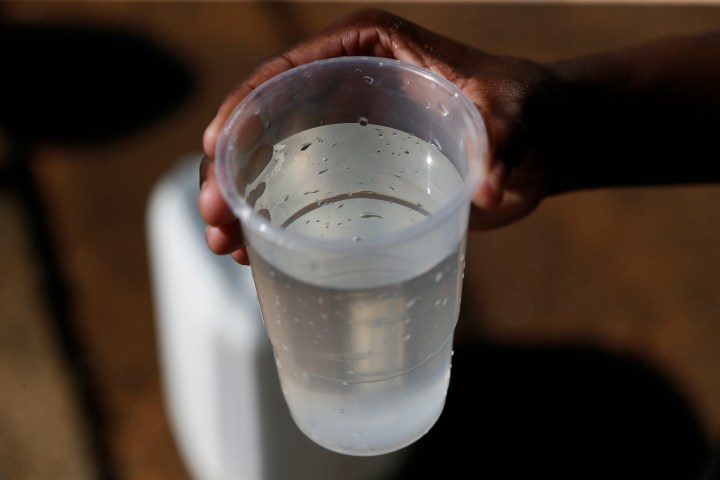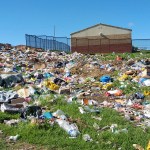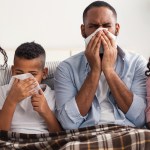INFECTIOUS DISEASE ALARM
Gauteng cholera outbreak — what you can do to ensure your water is safe

As health authorities scramble to combat the cholera outbreak in Hammanskraal that has claimed 15 lives and infected dozens more, it’s vital that communities ensure their water is safe to drink.
The cholera outbreak in Hammanskraal was caused by contaminated water from a dysfunctional wastewater treatment plant in Tshwane, according to the deputy minister for human settlements, water and sanitation, David Mahlobo.
The National Department of Health has advised pregnant women and other vulnerable groups to take extra precautions with their hygiene.
“This highly infectious condition affects the stomach and intestines. It is a leading cause of child death around the world. It mostly spreads by contact with an infected person or through contaminated food or drinking water,” the department said.
“Only drink safe water. If you’re unsure, boil or disinfect it first.”
According to the World Health Organization, it’s possible to contract cholera through:
- Drinking contaminated water; eating contaminated food (food that is raw, poorly cooked or that becomes contaminated with faeces during preparation or storage);
- Contact with anything that has been contaminated with the faeces or vomit of someone who has cholera; and
- Unprotected contact with the body of someone who has died from cholera.
Read more in Daily Maverick: Cholera outbreak in Gauteng – what you need to know about the disease, its spread and how to stay safe
There are five ways to make your water safe to drink, according to Rand Water.
Boil water
Boiling water kills any germs that might be in the water.
Step 1: Boil water in a pot.
Step 2: Allow to cool.
Step 3: Keep this boiled water covered with a lid or clean cloth to protect it from being contaminated by flies and dirt.
Add bleach
Bleach has a strong smell and contains chlorine which kills harmful germs in the water. Use bleach with caution and follow instructions carefully.
Step 1: Buy a bottle of bleach from your local shop.
Step 2: Add one teaspoon of bleach to 20 litres of water.
Step 3: Allow to stand for a minimum of two hours.
Step 4: Keep the water covered with a clean cloth or lid to keep out flies and dirt.
Add iodine
Iodine will also kill germs in the water. Do not use iodine if you are allergic to it.
Add 5 drops (1 drop = 0.05ml) of iodine to one litre of water.
Cover the water with a cloth or lid and let it stand for 15 hours.
If the water is cloudy, filter it through a clean cloth and double the dose to 10 drops of iodine per litre of water.
Water purification tablets
There are several water purification tablets available. These can be purchased from a chemist or camping shop. Please follow the instructions on the pack carefully.
When the dirt settles to the bottom of the container, filter the clean water through a clean cloth. The dirt will be left on the cloth. Be sure to keep the clean water covered with a clean cloth or lid.
Solar disinfection
Fill a clear plastic bottle with water and leave it in the sun for two hours. If half the bottle is painted black and it is placed on a corrugated iron sheet, the heating process is speeded up. The combination of warm water and ultraviolet radiation from the sun kills most microorganisms. This is particularly effective for killing the cholera bacterium, according to Rand Water.
According to the Rand Water purification guide:
You can reduce the risk for you and your loved ones by drinking safe water (well-monitored piped water, disinfected with household water treatment chemicals, boiled, or bottled). Using safe water for washing and preparing food and for cooking, cleaning your hands regularly using soap and safe water (or an alcohol-based hand rub if there is no visible dirt), especially before eating, cooking, after using the toilet/latrine, or changing your child’s diaper. Cooking food thoroughly, keeping it covered, and eating immediately after cooking it. And not going to the toilet or washing your hands or clothes near where you get your drinking water.
Water woes
Communities around the Vaal have had to contend with the mismanagement of its biggest water treatment plant, rendering their water unfit for consumption.
Dr Ferrial Adam, water and environment manager for the Community Action Network (WaterCAN), believes the crisis is caused by ageing infrastructure and inequality:
“You have infrastructure deterioration that is leading to people not having sufficient water. There’s also the element of the unequal distribution of water in South Africa. Less than 40 to 45% of the population have running water in their homes.”
The WaterCAN project called for the government to prioritise access to clean, safe water.
“Due to high levels of water contamination, WaterCAN has previously called on the government to test water sources regularly. Sewage pollution poses a serious risk to people’s health as it contains waterborne pathogens such as cholera, salmonella, typhoid and hepatitis.
“The level of pollution is going to kill entire river ecosystems. Sewage is not only a danger to human health but also has a massive impact on the river life that is needed for a healthy ecosystem,” said Adam.
WaterCAN reiterated the need for the government to prioritise the provision of safe and sustainable water sources to all communities, particularly those living in rural areas.
“There is an urgent need for the government to invest in water treatment and sanitation infrastructure so that we can prevent outbreaks of waterborne diseases like cholera.
“If urgent attention is not given to our water and sanitation systems, there will be a complete ecosystem collapse,” says Adam. DM



















 Become an Insider
Become an Insider
The governments crisis management, instead of proactive management, prevails !